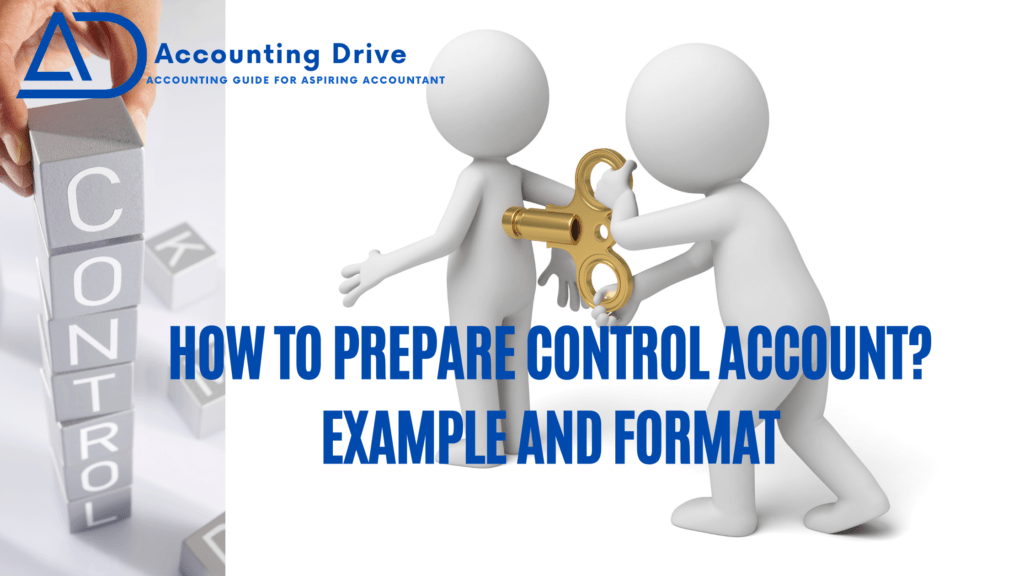What is control account and how does the control account work? And which accounts does it adjust or control particularly? Here are answers to these simple yet thought-provoking questions. Let’s have a look at the simple explanation given below.
What Is Control Account?
In This Article
ToggleA control account works as an adjusting and controlling account that summarizes and sums up balances of all subsidiary accounts’ information of a specific account type in a general ledger. The question that arises here is what is the subsidiary account? Subsidiary accounts are used to provide support and detailed information on a related account type.
These accounts are summary accounts that are used to organize and simplify the general ledger to prepare the company’s financial statement.
Simply put, as you know in large organizations there are numbers of customers as well as suppliers. So, if you record each transaction (account payable and account receivable) in the general ledger, it will become too difficult to manage your records easily. Thus, in order to keep a proper record, you have to maintain control accounts and subsidiary accounts.
Firstly, in the subsidiary ledger, you will maintain separate records of each customer and supplier (cash outflows and cash inflows). By doing this, you can track the record of every customer; their opening and ending balances as well as how much you owe or have to pay. Secondly, then you will make a control account in which you put the summary amount- total sales with its invoice price, total collections, or total payout. Thus, it helps you to track the overall performance of your business.
Why Prepare Control Account?
Why do we need to have it? Which necessity brings us to the need of preparing a this? don’t think twice just read ahead and all your queries are addressed below.
In the general ledger, there are hundreds of thousands of accounts including expenses, income, liabilities, and asset accounts. Furthermore, each type of account may have a number of transactions. Similarly, if every transaction will be recorded in the general ledger, it would become very difficult to organize the general ledger properly. Therefore, we need to have a separate controlling account for each account such as for accounts payable and accounts receivable. In addition, it provides organized and correct ending balances of specific account types for preparing financial statements. Moreover, it bring forth accuracy of analysis because it provides double-check of ending balances of each account. Most importantly, the ending balance of the subsidiary ledger should match the ending balance of the related controlling account.
Control accounts are usually maintained by large organizations because of a high volume of transactions. Assume you have 200 customers. Now, what you will do? To manage them properly, you have to first make a subsidiary ledger where you will keep a record of all customers in one place. Here you can find how much owe from each customer. At last, you can make a controlling account by putting ending balances of subsidiary accounts. So, it will tell you the total collections and total receivables you owe from your customers.
List Of Control Account
These are some common accounts that require control accounts for proper management.
- Account receivable
- Accounts payable
- Fixed assets
- payroll
How to Prepare Control Account?
You can prepare control accounts easily. There are two types of control accounts.
Types Of Control Account
There are two main types: Sales ledger and purchase ledger.
Sales Ledger Control Account
Sales ledger control account is also known as a debtors control account which summarizes balances and entries of all customer’s individual accounts in a single account. It will include only summary amounts that include the total amount owed by each customer, per day total collection from customers, per day total credit sales, and per day total allowances and returns.
For example, if there are 700 debtor accounts and you want to find out today’s credit sale made by MR. ABC, you can find this information in the specific customer credit sales. You have to check respective customer’s account receivable subsidiary ledger.
The double entry for transfer of per day total sales into the general ledger would be as follows:
| Date | Particular | Debit | Credit |
| XXX | Receivable control account | xxx | |
| Sales revenue account | xxx |
The control account format for sales ledger is as follow:
| Sales ledger control account (Format) | |
| Opening balance xxx | Opening balance xxx |
| Credit sales xxx | Sales discount xxx |
| Sales returns xxx | |
| Bank xxx | |
| Balance c/f xxx | Balance c/f xxx |
| Total xxx | Total xxx |
Purchase Ledger Control Account
Purchase ledger control account is also known as creditors control account. It summarizes balances and entries of all suppliers’ individual accounts in a single account. It will include only summary amounts that includes per day total payments to suppliers, per day total credit purchases, and per day total purchase allowances and returns.
The double entry for transfer of per day total purchases into the general ledger would be:
| Date | Particular | Debit | Credit |
| XXX | Purchase account | xxx | |
| Payable control account | xxx |
The format for purchase ledger is as follow:
| Purchase ledger control account (Format) | |
| Balance b/f xxx | Balance b/f xxx |
| Discount received xxx | Credit purchases xxx |
| Bank xxx | |
| Purchase return xxx | |
| Balance c/f xxx | Balance c/f xxx |
| Total xxx | Total xxx |
| Balance b/f xxx | Balance b/f xxx |
Key Points
Control accounts are summary accounts and considered as a quick glance when you want to know about your sales or purchase performance.
You can find details in the related subsidiary accounts.
When using subsidiary accounts, there is no need to record each transaction in general ledger.
It helps to quicken up the accounting process.

